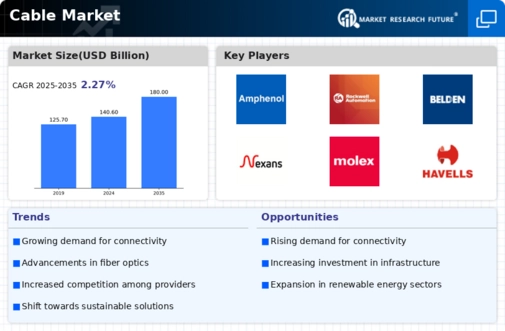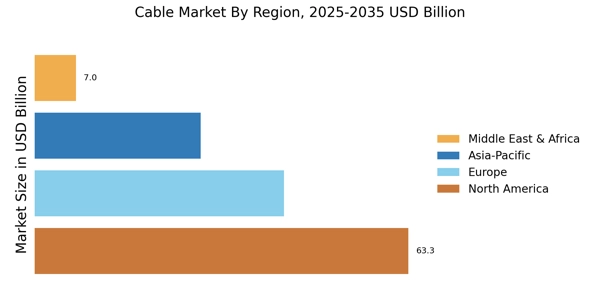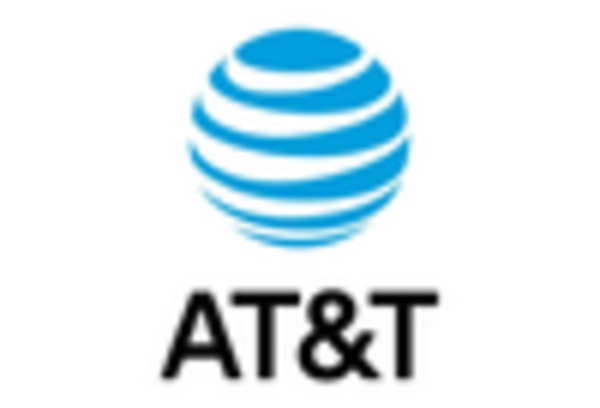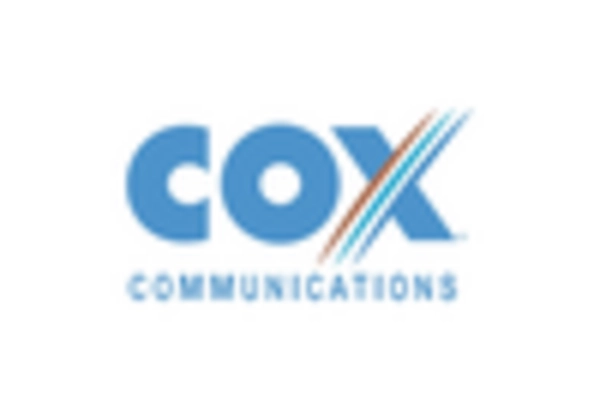Shift Towards Bundled Services
The trend towards bundled services is reshaping the Cable Market Industry. Consumers are increasingly opting for packages that combine internet, television, and phone services, seeking convenience and cost savings. This shift is evidenced by the growing number of subscribers who prefer bundled offerings over standalone services. Data suggests that bundled service packages can lead to higher customer retention rates, as they provide a comprehensive solution that meets multiple needs. As competition intensifies, cable providers are innovating their service bundles to include additional features such as streaming services and enhanced customer support. This strategic approach not only attracts new customers but also strengthens the loyalty of existing ones, thereby driving revenue growth within the Cable Market Industry. The ability to offer attractive bundles is likely to remain a key differentiator in the market.
Emergence of Smart Home Technologies
The emergence of smart home technologies is influencing the Cable Market Industry in profound ways. As consumers adopt smart devices and home automation systems, the demand for reliable and high-speed internet connectivity has intensified. Cable Market providers are recognizing the need to support these technologies, which often require robust bandwidth to function effectively. Data indicates that households equipped with smart home devices are more likely to seek high-speed cable internet services to ensure seamless connectivity. This trend presents an opportunity for cable companies to position themselves as essential service providers in the smart home ecosystem. By offering tailored solutions that cater to the needs of smart home users, the Cable Market Industry can enhance customer engagement and drive growth. The integration of smart technologies into everyday life is likely to further solidify the role of cable services in modern households.
Rising Demand for High-Speed Internet
The Cable Market Industry is experiencing a notable increase in demand for high-speed internet services. As consumers increasingly rely on digital connectivity for work, education, and entertainment, the need for faster and more reliable internet connections has surged. According to recent data, the number of broadband subscriptions has risen significantly, with a marked preference for cable internet due to its superior speed and stability compared to DSL and fiber options. This trend is likely to continue, as households and businesses seek to upgrade their internet capabilities. The Cable Market Industry is thus positioned to benefit from this growing demand, as providers expand their infrastructure to accommodate higher bandwidth requirements. This shift not only enhances customer satisfaction but also drives competition among service providers, further propelling advancements in technology and service offerings.
Increased Investment in Infrastructure
Investment in infrastructure is a critical driver for the Cable Market Industry. Telecommunications companies are allocating substantial resources to upgrade and expand their cable networks, aiming to enhance service quality and reach underserved areas. Recent reports indicate that capital expenditures in the cable sector have seen a steady increase, reflecting a commitment to improving network reliability and speed. This investment is essential for maintaining competitiveness in a rapidly evolving market, where consumer expectations for high-quality service are at an all-time high. Furthermore, as new technologies emerge, such as DOCSIS 4.0, the Cable Market Industry is poised to leverage these advancements to deliver faster internet speeds and improved service reliability. The ongoing infrastructure development not only supports current demand but also prepares the industry for future growth opportunities.
Regulatory Support for Broadband Expansion
Regulatory support plays a pivotal role in the growth of the Cable Market Industry. Governments are increasingly recognizing the importance of broadband access as a critical infrastructure component. Initiatives aimed at expanding broadband access, particularly in rural and underserved areas, are gaining momentum. Recent policy measures have included funding programs and incentives for cable providers to enhance their service offerings. This regulatory environment fosters investment in network expansion and upgrades, which is essential for meeting the rising demand for high-speed internet. As these initiatives continue to evolve, the Cable Market Industry stands to benefit from increased funding and support, enabling providers to reach a broader customer base. The alignment of regulatory goals with industry objectives is likely to create a more favorable landscape for growth.


















Leave a Comment